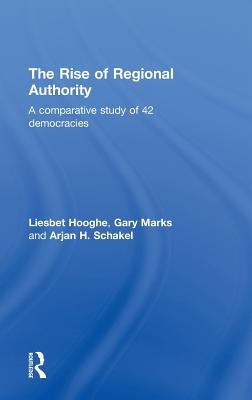
- We will send in 10–14 business days.
- Author: Liesbet Hooghe
- Publisher: Routledge
- ISBN-10: 0415578361
- ISBN-13: 9780415578363
- Format: 15.6 x 23.4 x 1.4 cm, hardcover
- Language: English
- SAVE -10% with code: EXTRA
Reviews
Description
Most countries around the globe have one or two levels of regional or intermediate government, yet we have little systematic idea of how much authority they wield, or how this has changed over time.
This book measures and explains the formal authority of intermediate or regional government in 42 advanced democracies, including the 27 EU member states. It tracks regional authority on an annual basis from 1950 to 2006. The measure reveals wide variation both cross-sectionally and over time. The authors examine four influences - functional pressures, democratization, European integration, and identity - to explain regionalization over the past half-century.
This unique and comprehensive volume will be a vital resource for students and scholars of comparative politics, public administration and public management, federalism, democratization, nationalism, and multilevel governance.
EXTRA 10 % discount with code: EXTRA
The promotion ends in 20d.20:44:41
The discount code is valid when purchasing from 10 €. Discounts do not stack.
- Author: Liesbet Hooghe
- Publisher: Routledge
- ISBN-10: 0415578361
- ISBN-13: 9780415578363
- Format: 15.6 x 23.4 x 1.4 cm, hardcover
- Language: English English
Most countries around the globe have one or two levels of regional or intermediate government, yet we have little systematic idea of how much authority they wield, or how this has changed over time.
This book measures and explains the formal authority of intermediate or regional government in 42 advanced democracies, including the 27 EU member states. It tracks regional authority on an annual basis from 1950 to 2006. The measure reveals wide variation both cross-sectionally and over time. The authors examine four influences - functional pressures, democratization, European integration, and identity - to explain regionalization over the past half-century.
This unique and comprehensive volume will be a vital resource for students and scholars of comparative politics, public administration and public management, federalism, democratization, nationalism, and multilevel governance.


Reviews